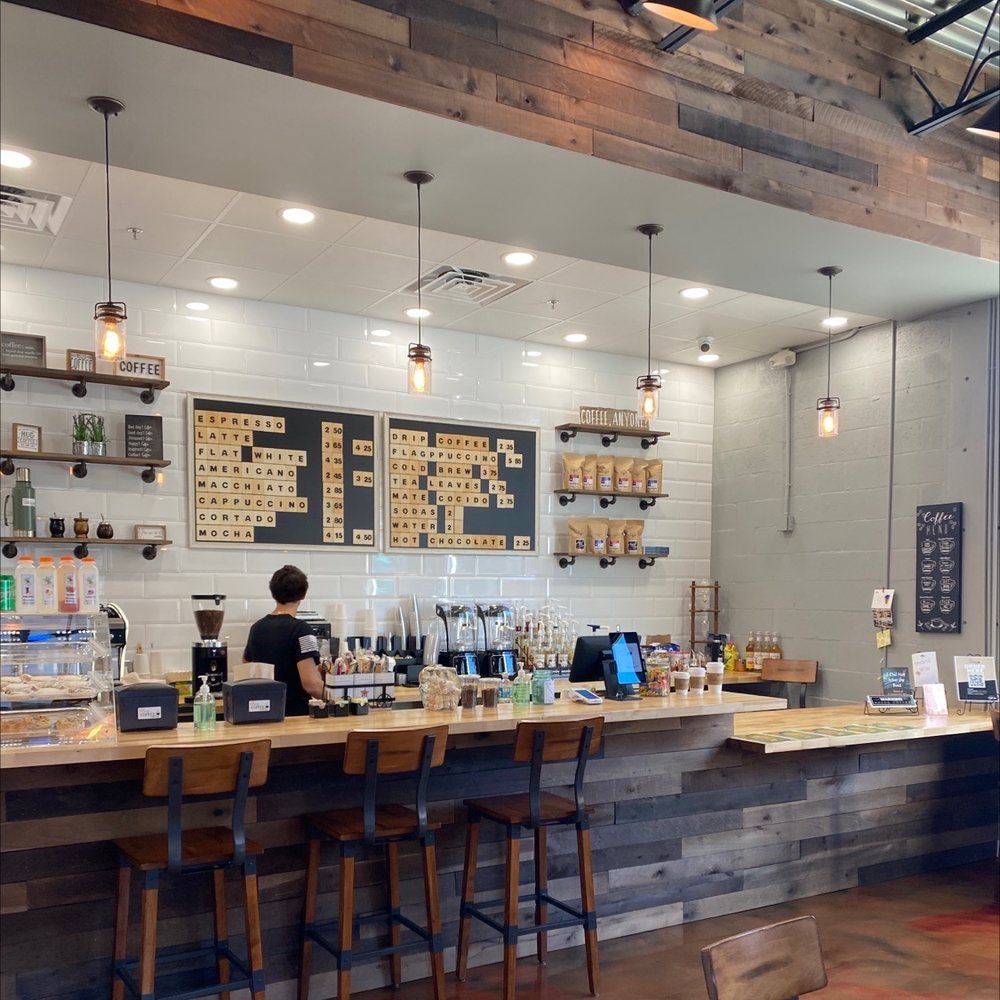Coffee is a beloved beverage enjoyed worldwide, but the journey from bean to cup begins with the crucial process of roasting. Coffee roasters are the unsung heroes, transforming raw green coffee beans into the flavorful gems that fuel our mornings and social gatherings. This guide delves into the world of coffee roasting, equipping you with the knowledge to select the perfect roaster for your needs.

Introduction to Coffee Roasters: Unveiling the Heart of Coffee Creation
A. From Bean to Brew: The Art and Science of Coffee Roasting
Coffee roasting is an art and science, meticulously transforming green coffee beans into the aromatic and flavorful beans we use to brew our favorite cup. Through carefully controlled heat application, roasters unlock the complex flavors and aromas trapped within the raw beans. Roast profiles, involving time and temperature variations, determine the final flavor characteristics, from bright and acidic light roasts to rich and full-bodied dark roasts.
B. Unveiling the Types of Coffee Roasters: Understanding Your Options
The world of coffee roasters offers a spectrum of options, catering to various needs and budgets. Here’s a glimpse into the most common types:
- Home Coffee Roasters: Compact and user-friendly, these roasters are ideal for coffee enthusiasts who want to personalize their coffee experience at home. They come in various capacities, from roasting a handful of beans to small batch production.
- Commercial Coffee Roasters: Designed for larger-scale production, commercial roasters offer increased capacity and advanced features like automated controls and data logging. These roasters are used by cafes, roasteries, and coffee businesses to meet their daily coffee bean demand.
- Sample Roasters: These miniature roasters are perfect for experimenting with small batches of coffee beans. They allow roasters to test different roast profiles and create unique blends before scaling up production.

Unveiling the Anatomy of a Coffee Roaster: Exploring Key Components
A. The Heat Source: The Engine of Roasting
The heat source is the heart of a coffee roaster, responsible for applying the necessary heat to transform the green coffee beans. Common heat sources include:
- Gas Burners: Offering precise control and a responsive heating element, gas burners are popular choices for roasters seeking a traditional approach.
- Electric Heating Elements: Electric roasters provide consistent and clean heat, making them ideal for home use or settings with ventilation limitations.
- Infrared Heaters: Newer models utilize infrared technology for efficient and even heat distribution, ensuring consistent roasts.
B. The Drum: The Roasting Vessel
The drum is the chamber where the magic happens. It houses the green coffee beans and tumbles them as they roast, ensuring even heat exposure. The size and material of the drum can impact heat distribution and roast consistency. Stainless steel drums are common due to their durability and heat retention properties.
C. The Agitation Mechanism: Ensuring Even Roasting
The agitation mechanism, often paddles or fans, continuously moves the coffee beans within the drum. This ensures even heat distribution and prevents the beans from scorching on one side. Proper agitation is crucial for achieving a consistent and high-quality roast.

Selecting the Perfect Coffee Roaster: A Guide to Informed Choices
Choosing the right coffee roaster requires careful consideration of your needs and preferences. Here are some key factors to ponder:
A. Considering Roasting Capacity: Matching Needs to Output
The roasting capacity, measured in pounds per batch, should align with your coffee consumption habits. Home roasters typically have capacities of a few ounces to one pound, while commercial roasters can handle much larger batches. Consider how much coffee you typically consume and whether you plan to roast for personal use or share with others.
B. Evaluating Heat Distribution: Achieving Consistent Roasts
Even heat distribution is paramount for consistent roasts. Look for roasters with features like well-designed drum shapes, efficient airflow systems, and adjustable heat sources. These elements ensure all the coffee beans experience the same roasting conditions, resulting in a balanced and flavorful cup.
C. Additional Features: Enhancing Your Roasting Experience
Several additional features can enhance your coffee roasting experience. Consider options like:
- Temperature Control: Precise temperature control allows for fine-tuning of roast profiles and achieving desired flavor characteristics.
- Data Logging: Advanced roasters can track and record roasting data like time, temperature, and bean weight, allowing for consistent replication of successful roasts.
- Smoke Suppression Systems: Smoke suppression systems are beneficial for indoor roasting, minimizing smoke and odor.

Mastering the Art of Coffee Roasting: Essential Techniques
Coffee roasting is both an art and a science, requiring practice and an understanding of key techniques. Here are some essentials to master:
A. Understanding Roast Profiles: Achieving Desired Flavors
A roast profile is a roadmap that dictates the time and temperature parameters throughout the roasting process. These parameters determine the final roast level and, consequently, the flavor profile of the coffee. Lighter roasts are roasted for a shorter duration at lower temperatures, resulting in brighter acidity, floral notes, and a lighter body. Conversely, darker roasts involve longer roasting times and higher temperatures, leading to a fuller body, richer flavors, and a smoother taste. Experimenting with roast profiles allows you to unlock the unique flavor potential of different coffee origins.
B. Monitoring the Roast: Visual and Auditory Cues
Throughout the roasting process, you can monitor the progress through visual and auditory cues. As the beans roast, their color will change progressively from green to yellow, then to various shades of brown depending on the desired roast level. Additionally, the beans will emit distinct cracking sounds, known as “first crack” and “second crack,” which indicate specific stages in the roasting process. By observing these cues, you can adjust the heat or airflow to achieve the desired roast profile.
C. Cooling and Resting: Preserving Flavor and Preventing Oxidation
Once roasting is complete, it’s crucial to cool the beans rapidly to halt the roasting process and prevent them from burning. Many roasters have built-in cooling mechanisms, or you can use a colander and a fan to achieve rapid cooling. After cooling, allow the beans to rest for at least 12 hours before grinding and brewing. During this resting period, the flavors develop further, and the carbon dioxide released during roasting dissipates, resulting in a smoother and more flavorful cup of coffee.

Safety Precautions for Coffee Roasters: Prioritizing a Safe Roasting Environment
Coffee roasting involves heat and moving parts, so prioritizing safety is essential. Here are some key precautions to remember:
A. Preventing Fires: Handling Coffee Roasters with Care
Always operate your coffee roaster in a well-ventilated area to prevent the buildup of heat and smoke. Keep flammable materials like oven mitts and towels away from the roaster while it’s in operation. Additionally, ensure the roaster is placed on a stable and heat-resistant surface.
B. Understanding Electrical Safety: Avoiding Hazards and Ensuring Proper Usage
For electric roasters, use a grounded outlet with the correct voltage and amperage rating. Regularly inspect the power cord for any damage or fraying. If you notice any electrical issues, discontinue use and consult a qualified electrician.
C. Maintaining a Clean Roasting Area: Preventing Hazards and Ensuring Optimal Performance
Maintain a clean roasting area free of clutter and flammable materials. Regularly clean the chaff collector within the roaster to prevent buildup, which could pose a fire hazard. Following these safety precautions will ensure a safe and enjoyable coffee roasting experience.
Coffee Roasters Beyond the Basics: Exploring Advanced Features and Techniques
While the core principles remain the same, coffee roasting offers opportunities for exploration and experimentation. Here are some ways to delve deeper into the world of coffee roasting:
A. Blending and Flavor Profiles: Creating Unique Coffee Experiences
Coffee blending is the art of combining different coffee origins and roast levels to create unique flavor profiles. Experimenting with blends allows you to create signature coffees tailored to your preferences. For example, blending a light-roasted Ethiopian coffee with a dark-roasted Sumatran coffee can result in a complex cup with bright acidity and a smooth chocolatey finish.
B. Roasting for Different Brewing Methods: Tailoring Roasts to Extraction
The ideal roast profile can vary depending on the brewing method. Lighter roasts are often preferred for pour-over methods that highlight the delicate flavors of the coffee, while darker roasts are suitable for espresso brewing, which requires a bolder flavor profile to stand up to the pressure and milk. Understanding the extraction process of different brewing methods allows you to tailor your roast profiles to achieve optimal results.
C. Experimental Roasting: Pushing the Boundaries of Flavor
Don’t be afraid to experiment with different roast profiles and techniques! Coffee roasting offers endless possibilities for exploration. Try using alternative heat sources like wood smoke or experimenting with extended drying times before roasting. Record your findings and keep track of successful roasts to refine your skills and discover new and exciting coffee flavors.
Coffee Roasters and Sustainability: Sourcing and Roasting Responsibly
Coffee production has a significant environmental and social impact. Here’s how coffee roasters can contribute to a more sustainable coffee industry:
A. Sourcing Sustainable Coffee: Supporting Ethical and Environmental Practices
Coffee roasters can play a crucial role in promoting sustainability by sourcing beans from farms that prioritize ethical labor practices and environmental stewardship. Look for certifications like Fairtrade or Rainforest Alliance, which ensure fair wages for farmers, responsible land management, and biodiversity protection.
B. Energy-Efficient Roasting: Minimizing Environmental Impact
The roasting process consumes energy. Consider these strategies for energy-efficient roasting:
- Choosing Energy-Efficient Roasters: Look for roasters with features like insulated drums and efficient heating elements that minimize heat loss.
- Optimizing Roast Profiles: Refine your roasting profiles to achieve desired results with shorter roasting times and lower temperatures where possible.
- Roasting in Batches: Roasting in smaller batches reduces energy consumption compared to constantly running a roaster at full capacity.
C. Waste Reduction and Recycling:
Coffee roasting generates waste in the form of chaff, the papery skin removed from the beans during roasting. Here’s how to minimize waste:
- Composting Chaff: Chaff can be composted and returned to the soil as a natural fertilizer, enriching the land for future coffee crops.
- Recycling Packaging Materials: Responsibly recycle cardboard boxes and other packaging materials used for coffee beans.
By adopting sustainable practices, coffee roasters can contribute to a more responsible and environmentally friendly coffee industry.
Conclusion: The Perfect Cup Begins with the Perfect Roast
Coffee roasting is a fascinating journey that unlocks the hidden potential within green coffee beans. Whether you’re a home enthusiast or a commercial roaster, selecting the right equipment and mastering essential techniques empowers you to create exceptional coffee experiences. With careful consideration, a commitment to sourcing responsibly, and a touch of experimentation, your coffee roaster can become a gateway to a world of flavorful exploration. So, embark on your roasting journey, and remember, the perfect cup of coffee begins with the perfect roast.